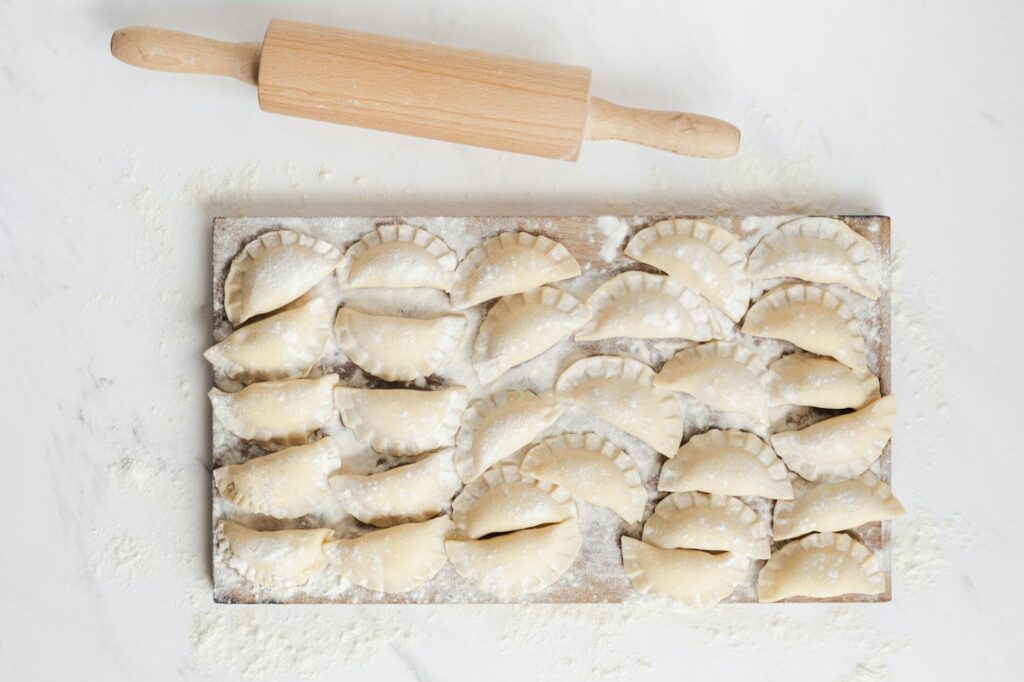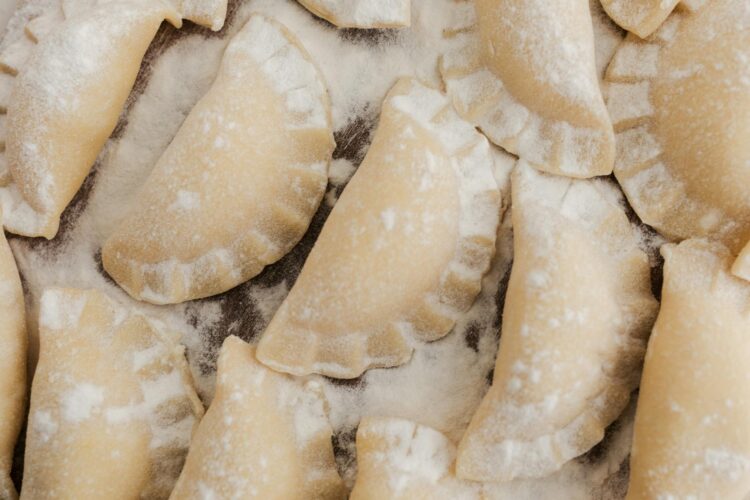Pierogi ruskie, or Polish potato and cheese dumplings, are a culinary cornerstone of Polish cuisine, beloved for their comforting flavors and satisfying texture. These aren’t your average dumplings; the delicate dough encases a hearty filling that’s both savory and subtly sweet, making them a perfect dish for any occasion.
The Magic of the Filling
The heart of any pierogi ruskie lies in its filling. Traditionally, it’s a mixture of creamy potatoes, tangy farmer’s cheese (often a type called twaróg), and sautéed onions. The key is to achieve a balance – the potatoes provide heartiness, the cheese adds creaminess and a touch of tang, and the onions offer a subtle sweetness and depth of flavor.  Get the perfect texture by ensuring your potatoes are well-cooked and properly mashed, allowing the mixture to bind together seamlessly. Many recipes also include a touch of caraway seeds for an added layer of complexity; experiment and see what suits your taste!
Get the perfect texture by ensuring your potatoes are well-cooked and properly mashed, allowing the mixture to bind together seamlessly. Many recipes also include a touch of caraway seeds for an added layer of complexity; experiment and see what suits your taste!
Crafting the Perfect Dough
The dough itself is relatively simple, typically consisting of flour, eggs, and water, but the kneading process is crucial. A properly kneaded dough will be smooth, elastic, and easy to roll out. Don’t be afraid to spend time on this step; the texture of the final pierogi will reflect the effort you put into the dough.  For a truly authentic experience, consider trying a recipe that incorporates sour cream or even a little vodka for an extra tender texture. For a guide on traditional methods, check out this great resource: Traditional Pierogi Dough Techniques.
For a truly authentic experience, consider trying a recipe that incorporates sour cream or even a little vodka for an extra tender texture. For a guide on traditional methods, check out this great resource: Traditional Pierogi Dough Techniques.
Shaping and Filling the Pierogi
Once you have your dough and filling prepared, it’s time for the assembly. This is where you can get creative! Some prefer small, delicate pierogi while others favor larger, more substantial ones. Regardless of size, the filling should be generous but not so much that it bursts out during cooking! You can find a useful video tutorial here: Pierogi Assembly Tutorial. Remember to seal the edges well, creating a half-moon shape. [IMAGE_3_HERE] Practice makes perfect, and you’ll soon be a pro at pinching those edges shut!
Cooking Your Pierogi: Options Abound
Pierogi ruskie can be cooked in several ways. Boiling is the most traditional method, resulting in soft, tender dumplings. However, pan-frying offers a delightful crispiness on the outside, enhancing the flavor and texture. For a richer experience, consider pan-frying them after boiling, which provides the best of both worlds! Learn more about cooking methods to discover your preferred technique. You might also want to explore baking them – find a recipe here: Baking Pierogi Recipe.
Serving Suggestions
These delicious dumplings are incredibly versatile. They can be served as a main course, a side dish, or even as appetizers. Many enjoy them with a dollop of sour cream or a sprinkle of fried onions. Adding a side of Polish sauerkraut completes the experience. You can also experiment with different toppings, such as bacon bits or fresh herbs. [IMAGE_4_HERE] No matter how you choose to serve them, pierogi ruskie are sure to impress!
Conclusion
Making pierogi ruskie is a labor of love, but the reward is well worth the effort. The rich, savory filling encased in tender dough provides a satisfying culinary experience that connects you to Polish culinary tradition. So, gather your ingredients, put on some Polish music, and get ready to enjoy this delicious culinary journey!
Frequently Asked Questions
What type of cheese is traditionally used in pierogi ruskie? Typically, a farmer’s cheese called twaróg is used, but you can substitute with ricotta or a similar type of cheese.
Can I freeze pierogi ruskie? Absolutely! Freezing uncooked pierogi is a great way to enjoy them later. Simply lay them out on a baking sheet to freeze individually, then transfer them to a freezer bag.
How long do cooked pierogi ruskie last in the refrigerator? Cooked pierogi will typically last for 3-4 days in the refrigerator when stored properly in an airtight container.
Are there any variations of pierogi ruskie? While the potato and cheese filling is traditional, some recipes add sauteed mushrooms or even a touch of dill for a unique twist.
What is the best way to reheat leftover pierogi? You can gently reheat them in a pan with a little butter or by steaming them. Avoid microwaving, as it can make them soggy.
